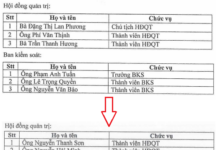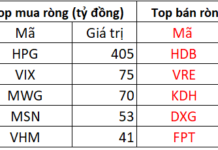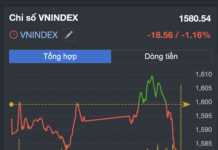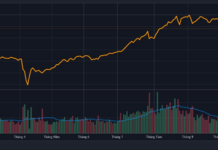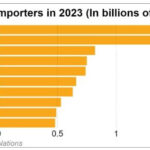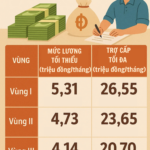
India has lifted its minimum export price on premium basmati rice, a move that comes as a relief to the country’s struggling rice farmers who have been burdened by rising export costs for this superior variety.
Last year, New Delhi had set a floor price, or the minimum export price (MEP), at $1,200 per ton, which was later reduced to $950 per ton. In July, Reuters reported that India was likely to further lower the MEP for basmati rice exports, which did not materialize.
Since then, with increasing supply, exporters have been urging the government to reduce or eliminate the MEP to ensure that farmers do not bear the brunt of large inventories as the new harvest season approaches in a month’s time.
“The decision to scrap the MEP will enable India to export basmati rice in large quantities, and this will ensure good profits for our farmers,” said Satish Goel, chairman of the All India Rice Exporters Association.
Thousands of impoverished and indebted farmers have complained of declining incomes and soaring fuel and fertilizer prices.
This latest decision comes ahead of October elections in the northern Indian state of Haryana – a significant producer of basmati rice and other agricultural commodities. About two-thirds of India’s 1.4 billion people live in rural areas, making farmers a crucial voting bloc.
India and Pakistan, the only two growers of basmati rice, have both sought to promote this superior variety in a similar fashion to French champagne or Darjeeling tea. Basmati rice is a premium long-grain variety renowned for its distinct flavor and aroma. In India, basmati rice is predominantly grown in the Indo-Gangetic Plains and commands a higher price compared to other rice varieties.
Basmati rice is not widely consumed in India, and the government does not purchase this variety for its national reserves, unlike regular rice, which is often bought for reserves, preventing excess supply.
In the international market, Indian basmati rice fetches around $700 per ton. Mr. Satish Goel stated that the complete removal of MEP was a sensible move. “With today’s decision, we will be able to regain our market share in the global arena,” he said.
New Delhi exports 4 to 5 million tons of basmati rice to countries such as Iran, Iraq, Yemen, Saudi Arabia, the United Arab Emirates, and the United States. Europe is also a significant market for this variety.
However, India continues to restrict the export of non-basmati rice varieties to curb domestic price rises.
According to India’s Ministry of Statistics, food inflation rose 5.66% in August. However, prices may ease in the coming months due to ample domestic grain reserves and the upcoming rice harvest season in a few weeks.
India began banning or increasing taxes on major rice varieties in 2022 to shore up supplies and curb food inflation ahead of the elections. These moves drove up rice prices in the Asian market to their highest levels since 2008 last year and caused consumers to panic-buy supplies from alternative countries.
Asian Rice Prices Tumble
Thai rice prices this week fell to their lowest in over a year as auction participants were forced to lower their bids in a recent auction held by Indonesia, while Indian export prices continued to slide to an eight-month low.
Indian 5% broken rice is now quoted at $528-534 per ton, the lowest since mid-January, and down from $535-540 offered last week.
“Demand has been very weak in the past few weeks. Buyers had anticipated a reduction in India’s export tax structure and are deferring purchases,” said Krishna Rao, president of the Rice Exporters Association.
Thai 5% broken rice prices also fell this week to $550-$565 per ton, the lowest since July 20, 2023, down from $585 a week ago. The market still considers Thai rice prices too high, and while flash floods are damaging short-term yields, there could be improvements in the future.
Vietnamese 5% broken rice was offered at $567 per ton, down from $575 a week ago, according to the Vietnam Food Association.
Reference: Reuters
Export Rice Prices Hit a Three-Month High
The Vietnamese rice price has reached its highest point in almost three months, with a tight supply situation despite muted demand tempering the price rise.
The Rising Price of Rice: Forecasting Record-Breaking Exports
The price of Vietnamese rice is surging once again, reclaiming its position as the most expensive in the world. Despite this, traditional partners have surprisingly announced their intention to import even larger volumes than initially anticipated, suggesting that rice exports could break records in both volume and value this year.
Will Rice Exports Continue to Break Records?
In the first half of the year, among the seven agricultural, forestry, and aquatic products that achieved export values of over $1 billion, rice was the only commodity that witnessed both an increase in volume and selling price.











